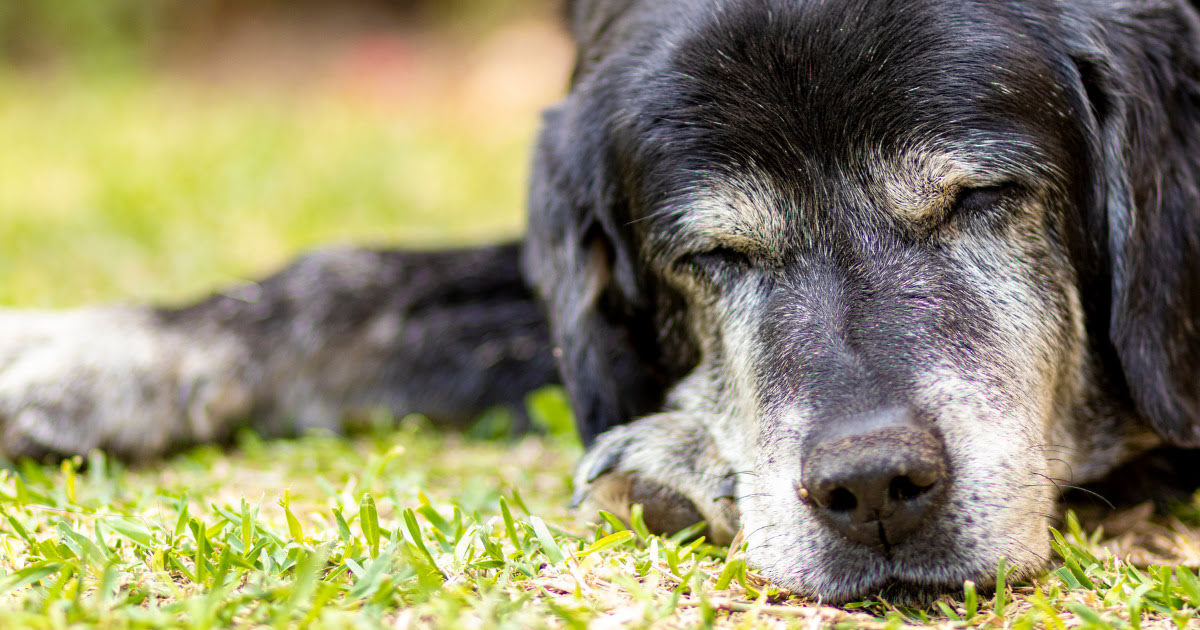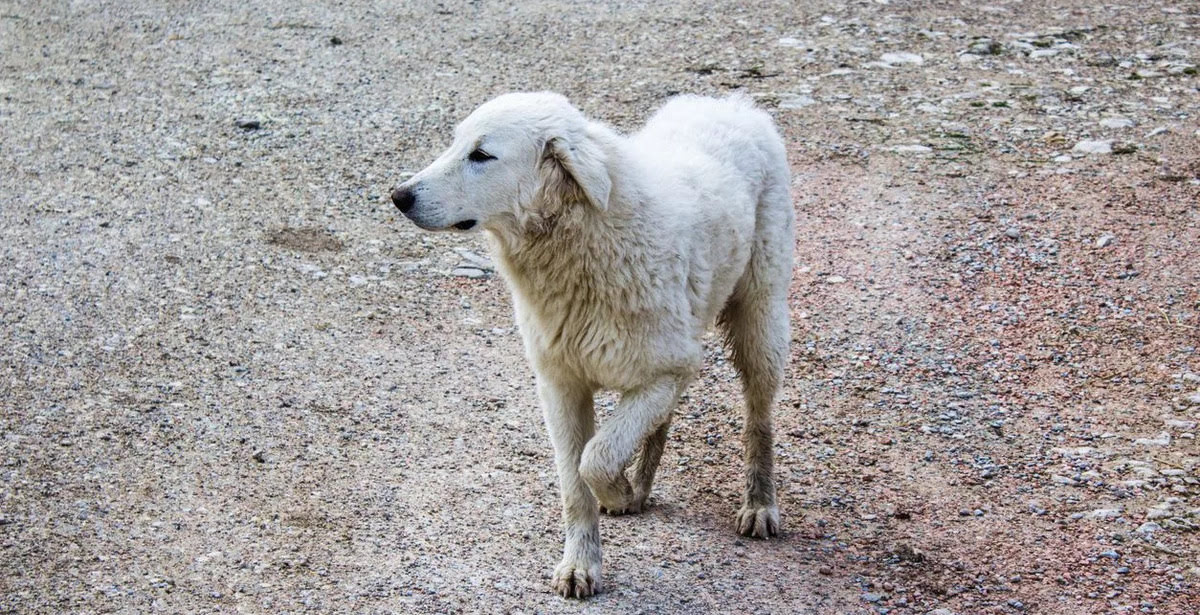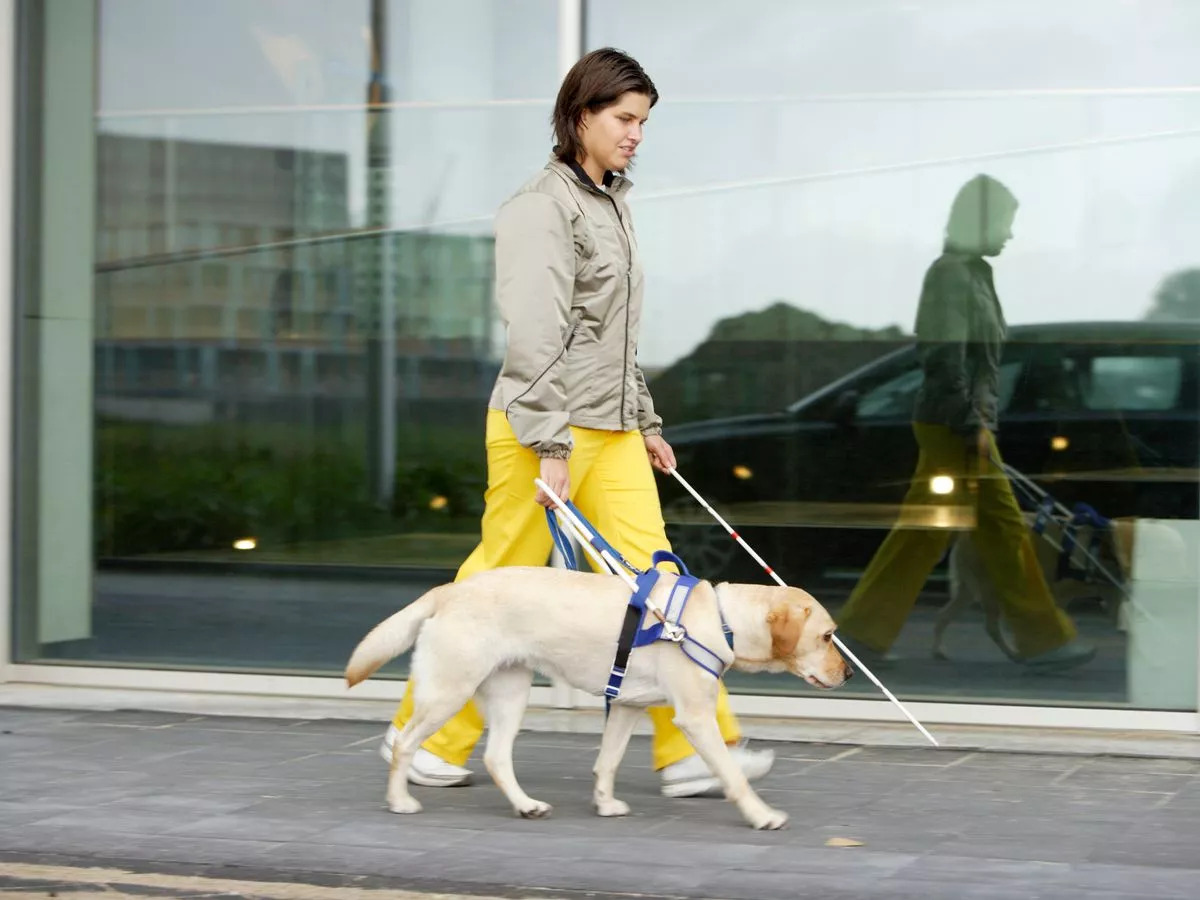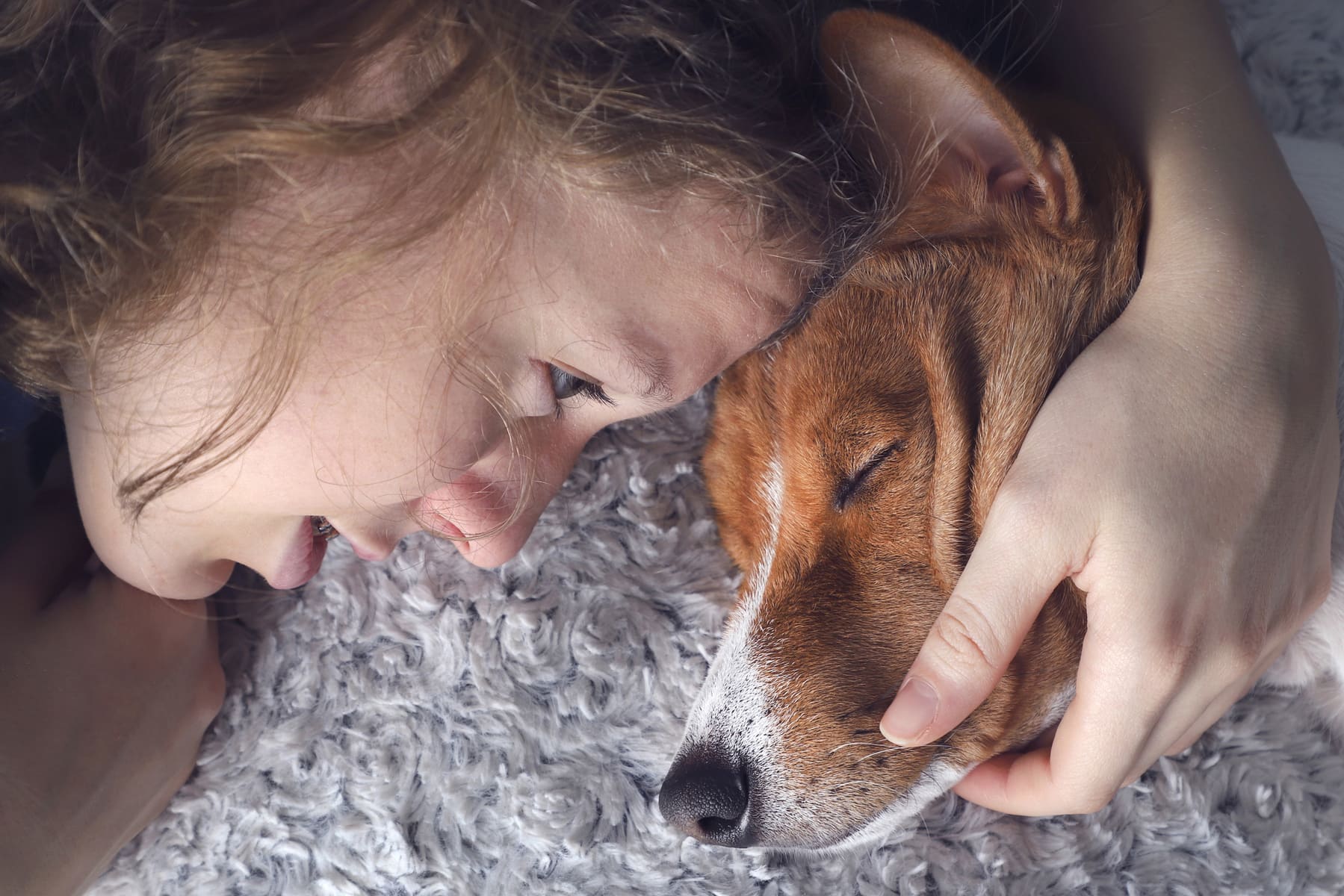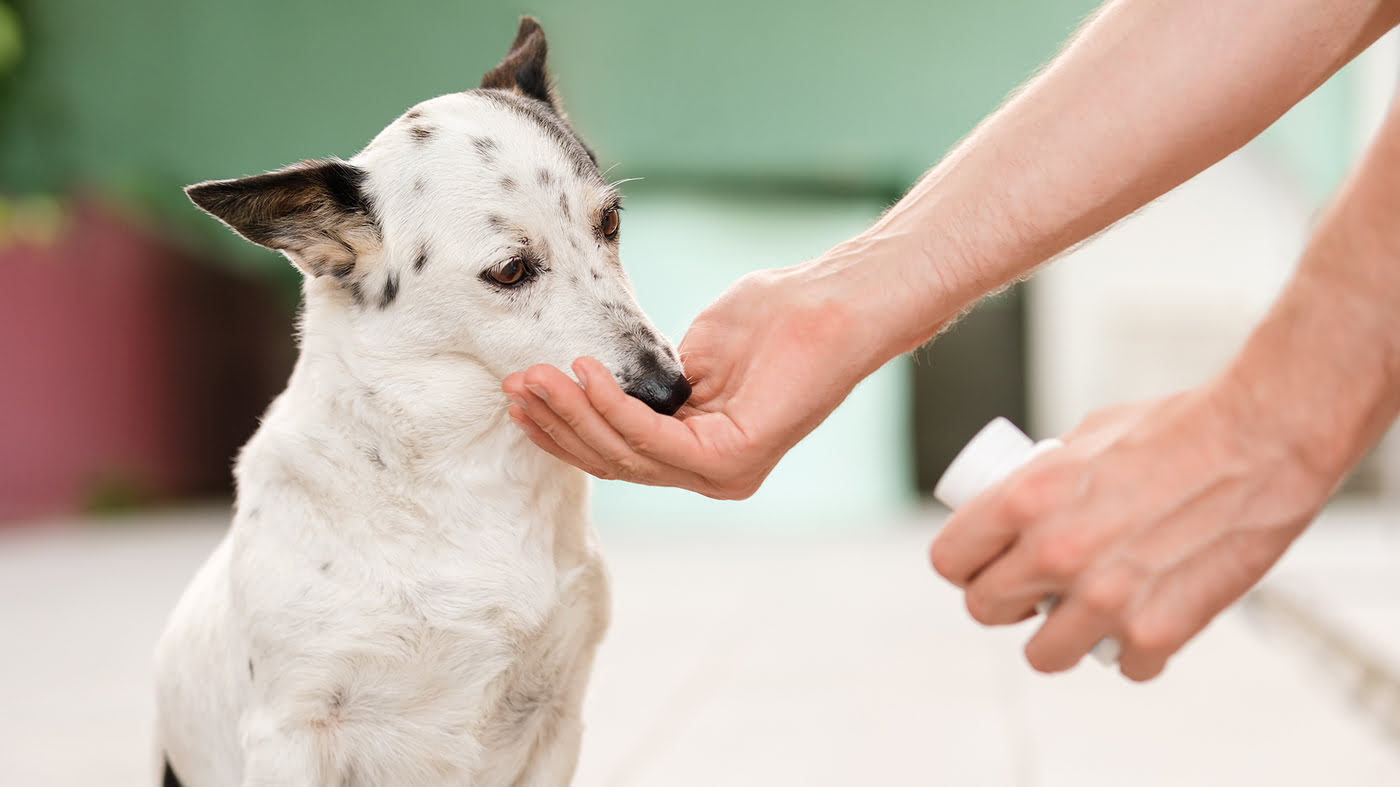Home>Health & Wellness>Common Health Issues>Muscular and Joint Health>Elderly Dog With Arthritis Growls When Touched


Muscular and Joint Health
Elderly Dog With Arthritis Growls When Touched
Modified: February 21, 2024
Improve your elderly dog's muscular and joint health to alleviate arthritis discomfort. Learn how to handle their growling behavior with care and understanding.
(Many of the links in this article redirect to a specific reviewed product. Your purchase of these products through affiliate links helps to generate commission for Pawsomeoldies.com, at no extra cost. Learn more)
Table of Contents
Introduction
Arthritis is a common condition that affects not only humans but also our beloved canine companions. As dogs age, they are susceptible to developing arthritis, a painful and debilitating joint disease. Just like humans, dogs can experience discomfort, stiffness, and reduced mobility due to this condition. It's crucial for pet owners to recognize the signs of arthritis in their furry friends and understand how to provide them with the care and support they need.
In this comprehensive guide, we will delve into the world of arthritis in dogs, shedding light on the signs and symptoms of this condition, the potential causes of aggressive behavior in arthritic dogs, and practical tips for handling an elderly dog with arthritis. By gaining a deeper understanding of arthritis in dogs, you can ensure that your canine companion receives the best possible care and support as they navigate the challenges of this common ailment.
Throughout this article, we will explore the various facets of arthritis in dogs, offering valuable insights and actionable advice to help you navigate this journey with your furry friend. Whether you're a seasoned pet owner or a first-time dog parent, this guide will equip you with the knowledge and tools to provide compassionate care for an elderly dog coping with arthritis. Let's embark on this enlightening exploration of canine arthritis and discover how we can make a positive difference in the lives of our beloved four-legged companions.
Read more: When Is It Too Cold For A Dog With Arthritis
Understanding Arthritis in Dogs
Arthritis, also known as osteoarthritis or degenerative joint disease, is a prevalent condition that affects dogs, particularly as they age. This chronic ailment involves the inflammation and degeneration of the joints, leading to pain, stiffness, and reduced mobility. Just like humans, dogs rely on their joints for everyday activities such as walking, running, and playing. When arthritis sets in, it can significantly impact a dog's quality of life and overall well-being.
The most common form of arthritis in dogs is osteoarthritis, which occurs when the cartilage within the joints deteriorates, causing the bones to rub against each other. This friction results in pain, swelling, and restricted movement, making it challenging for dogs to perform activities they once enjoyed. While osteoarthritis is often associated with aging, it can also develop as a result of joint injuries, genetic predisposition, or developmental disorders.
Understanding the underlying mechanisms of arthritis in dogs is essential for pet owners, as it enables them to recognize the signs and symptoms of this condition and take proactive measures to support their furry companions. By gaining insight into the impact of arthritis on a dog's joints and overall health, pet owners can provide the necessary care and accommodations to enhance their dog's comfort and mobility.
Arthritis can affect any joint in a dog's body, including the hips, knees, elbows, shoulders, and spine. The onset of arthritis is often gradual, with symptoms becoming more pronounced over time. Dogs with arthritis may exhibit signs of discomfort, such as limping, reluctance to engage in physical activities, difficulty rising from a lying position, and a noticeable decrease in energy levels. Additionally, pet owners may observe changes in their dog's gait, as well as swelling and warmth around the affected joints.
As arthritis progresses, dogs may experience stiffness and soreness, particularly after periods of inactivity. This can manifest as reluctance to climb stairs, jump onto furniture, or engage in play. Furthermore, arthritis can impact a dog's behavior, leading to irritability, restlessness, and in some cases, aggression, especially when the affected joints are touched or manipulated.
By understanding the multifaceted nature of arthritis in dogs, pet owners can approach their dog's care with empathy and attentiveness, ensuring that their furry companions receive the support and comfort they need to navigate this challenging condition. Through education and awareness, pet owners can empower themselves to make informed decisions regarding their dog's health and well-being, ultimately fostering a deeper bond with their canine companions.
Signs and Symptoms of Arthritis in Dogs
Recognizing the signs and symptoms of arthritis in dogs is crucial for pet owners to provide timely care and support for their furry companions. While dogs are adept at masking discomfort, several indicators can point to the presence of arthritis. One of the most noticeable signs is a change in a dog's gait, characterized by a limp or an altered walking pattern. This alteration is often more pronounced after periods of rest or inactivity, as the joints become stiff and painful upon movement.
Pet owners may also observe their dog exhibiting reluctance to engage in physical activities they once enjoyed. This can manifest as a decreased interest in playing, running, or jumping, as the pain and discomfort associated with arthritis deter them from participating in these activities. Additionally, dogs with arthritis may experience difficulty rising from a lying position, often accompanied by visible discomfort or stiffness in their movements.
Another common symptom of arthritis in dogs is a noticeable decrease in energy levels. Arthritic dogs may appear lethargic or less enthusiastic about daily activities, reflecting the toll that joint pain and inflammation can take on their overall well-being. Furthermore, pet owners may observe swelling and warmth around the affected joints, indicating the presence of inflammation and potential joint damage.
As arthritis progresses, dogs may exhibit signs of discomfort and pain, particularly after engaging in physical activities. This can manifest as visible signs of soreness, such as panting, restlessness, or seeking out quiet and secluded areas to alleviate their discomfort. Additionally, pet owners may notice changes in their dog's behavior, including irritability and sensitivity to touch, especially around the affected joints.
In some cases, dogs with arthritis may display signs of aggression when their painful joints are touched or manipulated. This defensive behavior is a protective response to the pain they experience, highlighting the need for gentle and empathetic handling of arthritic dogs. By recognizing these signs and symptoms, pet owners can take proactive measures to provide their furry companions with the care and support they need to manage arthritis effectively.
Understanding the signs and symptoms of arthritis in dogs empowers pet owners to intervene early, seek appropriate veterinary care, and implement strategies to enhance their dog's comfort and mobility. By remaining vigilant and attuned to their dog's behavior and physical well-being, pet owners can play a pivotal role in mitigating the impact of arthritis and improving their dog's quality of life.
Causes of Aggressive Behavior in Dogs with Arthritis
Aggressive behavior in dogs with arthritis can be attributed to the physical discomfort and pain they experience due to the inflammatory nature of the condition. When a dog is in pain, especially from a chronic ailment like arthritis, their natural response may include defensive or aggressive behaviors as a means of self-protection. It's essential for pet owners to recognize the underlying causes of aggression in arthritic dogs and respond with empathy and understanding.
The primary cause of aggressive behavior in dogs with arthritis is the association of pain with specific actions or stimuli. When an arthritic dog experiences pain upon being touched or manipulated, they may exhibit defensive behaviors such as growling, snapping, or even biting. This defensive response is a protective mechanism, as the dog perceives the action as a threat to their well-being due to the pain it induces.
Furthermore, the chronic nature of arthritis can lead to persistent discomfort, which may exacerbate a dog's irritability and sensitivity to touch. Dogs with arthritis may become increasingly defensive or reactive when approached or handled, particularly around the affected joints. This heightened sensitivity is a direct result of the pain and inflammation they experience, prompting them to communicate their distress through defensive behaviors.
In some cases, the frustration and distress stemming from the limitations imposed by arthritis can contribute to aggressive behavior in dogs. When a once-active and agile dog finds themselves struggling with mobility and discomfort, it can lead to feelings of frustration and anxiety. This emotional response may manifest as defensive or aggressive behaviors, as the dog attempts to assert control over their environment and protect themselves from perceived threats.
It's important to note that aggressive behavior in arthritic dogs is a manifestation of their distress and discomfort, rather than a reflection of their true temperament. By understanding the underlying causes of aggression in the context of arthritis, pet owners can approach their dog's care with compassion and patience, seeking to alleviate their pain and provide a supportive environment.
Recognizing the causes of aggressive behavior in dogs with arthritis empowers pet owners to respond appropriately, implementing strategies to minimize their dog's discomfort and reduce the triggers for defensive behaviors. Through gentle handling, pain management, and creating a conducive environment, pet owners can help their arthritic dogs feel more secure and at ease, ultimately fostering a harmonious and supportive relationship.
Tips for Handling an Elderly Dog with Arthritis
Caring for an elderly dog with arthritis requires a compassionate and attentive approach to ensure their comfort and well-being. Here are essential tips for handling an elderly dog coping with arthritis:
-
Gentle Handling: When interacting with an arthritic dog, gentle and mindful handling is paramount. Avoid putting pressure on their painful joints and opt for supportive lifting techniques when assisting them. By minimizing physical stress on their joints, you can alleviate their discomfort and promote a sense of security.
-
Comfortable Living Environment: Create a comfortable and accessible living environment for your arthritic dog. Provide a soft and supportive bed with ample cushioning to relieve pressure on their joints. Additionally, consider installing ramps or steps to facilitate easy access to elevated areas, minimizing the need for strenuous jumping or climbing.
-
Regular Low-Impact Exercise: Engage your elderly dog in regular, low-impact exercise to maintain their mobility and muscle strength. Gentle activities such as short walks, swimming, and controlled indoor play can help alleviate stiffness and prevent muscle atrophy without exacerbating joint pain.
-
Weight Management: Maintain a healthy weight for your arthritic dog to reduce the strain on their joints. Consult with your veterinarian to develop a balanced diet and feeding regimen tailored to your dog's specific needs, ensuring they receive essential nutrients while managing their weight effectively.
-
Joint-Friendly Supplements: Consider incorporating joint-friendly supplements, such as glucosamine and omega-3 fatty acids, into your dog's diet. These supplements can support joint health, reduce inflammation, and alleviate discomfort associated with arthritis, contributing to improved mobility and overall well-being.
-
Warmth and Comfort: Provide warmth and comfort for your arthritic dog, especially during colder months. Consider using orthopedic dog blankets or heating pads to soothe their joints and alleviate stiffness. Additionally, ensure that their living space is draft-free and comfortably warm to promote relaxation and alleviate muscle tension.
-
Regular Veterinary Check-Ups: Schedule regular veterinary check-ups to monitor your dog's arthritis and overall health. Your veterinarian can assess their condition, adjust treatment plans as needed, and provide guidance on managing arthritis-related symptoms effectively.
By implementing these tips, you can create a supportive and nurturing environment for your elderly dog with arthritis, enhancing their quality of life and fostering a strong bond based on compassion and attentive care.
Read more: When To Euthanize A Dog With Arthritis
When to Seek Professional Help
Recognizing the appropriate time to seek professional help for an elderly dog with arthritis is crucial in ensuring their ongoing comfort and well-being. While proactive home care plays a significant role in managing arthritis-related symptoms, there are instances where professional intervention is necessary to address the evolving needs of an arthritic dog.
Persistent or Aggravated Symptoms
If your elderly dog's arthritis symptoms persist or worsen despite home care measures, it's essential to seek professional help. Persistent lameness, increased difficulty in movement, or heightened signs of discomfort may indicate the need for a comprehensive assessment by a veterinarian. Professional evaluation can help identify any underlying factors contributing to the exacerbation of symptoms and guide the implementation of targeted treatment strategies.
Sudden Behavioral Changes
Sudden behavioral changes in an arthritic dog, such as increased aggression, withdrawal, or heightened irritability, warrant professional attention. These shifts in behavior may signal escalating pain or discomfort, necessitating a thorough examination by a veterinarian. By addressing these changes promptly, potential sources of distress can be identified and managed effectively, promoting a more stable and comfortable environment for the dog.
Difficulty in Daily Activities
If your elderly dog experiences increasing difficulty in performing daily activities such as standing, walking, or engaging in routine tasks, it's advisable to consult with a veterinarian. Difficulty in mobility and a noticeable decline in the dog's ability to carry out essential functions may indicate the need for professional guidance. A veterinarian can conduct a comprehensive assessment to determine the extent of mobility challenges and recommend appropriate interventions to support the dog's daily activities.
Read more: When To Put Your Dog Down Due To Arthritis
Uncontrolled Pain or Discomfort
Uncontrolled pain or discomfort in an arthritic dog necessitates prompt veterinary intervention. If your dog exhibits signs of distress, such as persistent vocalization, restlessness, or an inability to find relief, professional assistance is imperative. A veterinarian can conduct a thorough pain assessment, adjust pain management strategies, and explore alternative treatment options to alleviate the dog's discomfort effectively.
Adverse Medication Reactions
In the event of adverse reactions to arthritis medications or treatments, seeking professional help is paramount. If your dog experiences unexpected side effects, allergic reactions, or intolerance to prescribed medications, prompt veterinary evaluation is essential. A veterinarian can assess the dog's response to medications, make necessary adjustments, and recommend alternative approaches to manage their arthritis while minimizing adverse effects.
By remaining vigilant and responsive to changes in your elderly dog's condition, you can make informed decisions regarding the appropriate timing to seek professional help. Veterinary expertise and guidance play a pivotal role in addressing the evolving needs of an arthritic dog, ensuring that they receive tailored care and support to enhance their quality of life.
Conclusion
In conclusion, caring for an elderly dog with arthritis requires a multifaceted approach that encompasses attentive home care, proactive intervention, and a deep understanding of the challenges posed by this chronic condition. By recognizing the signs and symptoms of arthritis in dogs, pet owners can provide compassionate support tailored to their furry companions' specific needs. The journey of managing arthritis in dogs is characterized by empathy, patience, and a commitment to enhancing their comfort and mobility.
Through gentle handling, creating a conducive living environment, and incorporating joint-friendly supplements, pet owners can significantly impact their arthritic dog's quality of life. It's essential to remain attuned to any changes in behavior or mobility, promptly seeking professional help when necessary to address evolving needs and ensure comprehensive care.
The causes of aggressive behavior in dogs with arthritis underscore the profound impact of pain and discomfort on their emotional well-being. By approaching their care with empathy and understanding, pet owners can mitigate triggers for defensive behaviors and create a supportive environment that promotes a sense of security and comfort for their arthritic dogs.
Ultimately, the bond between a pet owner and their arthritic dog is strengthened through unwavering dedication to their well-being. By navigating the complexities of arthritis with resilience and compassion, pet owners can make a meaningful difference in their dog's life, fostering a harmonious and nurturing environment that celebrates the enduring companionship between human and canine.
As we embark on this journey with our arthritic dogs, let us embrace the opportunity to provide unwavering support, alleviate their discomfort, and celebrate the resilience and spirit that define our beloved furry companions. Together, we can navigate the challenges of arthritis in dogs with empathy, knowledge, and a profound commitment to enhancing their well-being, ensuring that they continue to thrive as cherished members of our families.
